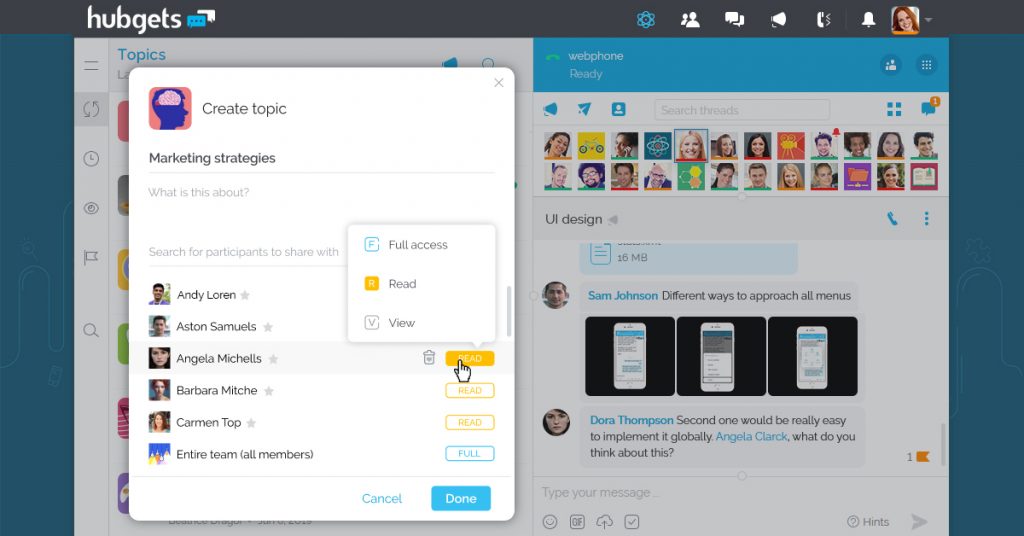In this day and age, millennial-run startups prefer a more horizontal type of organizational structure. People are more and more inclined towards blurring the lines between formal and casual. However, formal communication hasnít totally lost its power. There are still instances in which this type of communication is needed. In such cases, it can make all the difference between order and chaos at work.
In this article we are going to discuss the main advantages of formal communication, and how we can overcome its disadvantages.

What is formal communication
Formal communication is still very much present in medium-sized and large companies. Here, the hierarchical organization is clearly defined. It mostly refers to the structured channel of information within an organization.
Most often, formal communication goes downwards, from the chain of command to the executants in the form of orders, instructions, rules and regulations, notifications etc. However, in some circumstances, it can go upwards too, as the employee sends back feedback, complains, suggestions and so on.
Main characteristics
Formal communication can easily be recognized. It follows a set of characteristics that clearly separates it from informal communication, such as:
- It requires a vertical organization, with the recognition of authority.
- A structured path is followed.
- It allows no (or very little) flexibility.
- With very few exceptions, it goes through written channels.
- While it can go two ways, it usually goes downward.
- It maintains a standard that needs to be respected.
Channels used in formal communication
This form of communication almost always leaves a paper trail – be it physical or digital. The most used channels are:
- Printed statements
- News bulletins
- Digital forms – organization website, internal forums, etc.
The main advantages
Formal communication is still widely used in the corporate world due to its many advantages that allow management to reach their goals and keep productivity high. Letís go through some of the most important advantages that kept formal communication relevant to this day.
1. Clear and reliable
Abiding to a clear set of rules, formal communication has a clear intent. There is little room for misunderstandings or misinterpretations, as it frequently happens with informal communication.
Receivers know exactly what is expected of them and when, which makes the process safer and more reliable.
2. Available for future reference
Receiving verbal instructions is great, as it allows room for follow-up questions and clarifications. However, relying on human memory can lead to gaps and errors.
Grow your business faster with efficient team communication!
With formal communication being based on written instructions, that is less likely to happen. You can always go back and check that email received from the boss, but you canít rewind the conversation you had (yet).
3. It saves time
Of course, writing an email or a memo takes time. Also, it requires a great deal of focus to produce a compelling piece that wouldnít require side explanations. But it can also be done at your own pace, and even included into your schedule.
Once thatís done, you wonít need to sacrifice a great amount of time discussing it, as it would be the case with new or instructions delivered in person.
4. Can be done en-masse
No one is feeling left out when formal communication channels are used. Same information goes out to everyone at the same time so it doesnít leave room for rumors or hard feelings.
Some subjects are more important than others and transmitting them via informal channels can have undesired effects. Especially when it comes to announcing changes, formal communication should always be used.
Sensitive topics can make even the slightest communication error snowball and turn into a crisis. Avoid that by using the formal channels and treating everyone equally.
5. Management stays in control
With formal communication management can always stay on top of things. Basically it doesn’t allow word to spread from mouth-to-mouth and have the message distorted in an uncontrollable manner. Instead, using a formal channel guarantees that the message gets out exactly in its intended form.
6. Feels less personal
While most of the time personal interactions are desirable and feelings are important, there are instances that require the opposite. Formal communication feels less personal, which means that peopleís feelings are less likely to affect strategic decisions.
In some situations it can even help both parties avoid awkward or embarrassing situations that would arise in face-to-face interactions.
Disadvantages of formal communication
Besides the great advantages, formal communication also comes with a set of disadvantages. These might make it less appealing, especially for the new generations of entrepreneurs. Some of these deal-breakers are:
1. Creates divisions
Formal communication keeps clear boundaries between management and employees. Eventually, this can create a feeling of distance between the two sides. But in order to succeed, everyone should feel on the same side. Everybody has the same common goal – the success of the company.
2. Provides limited clarifications
In face-to-face interactions, people usually have follow-up questions for any given tasks and demands. Classic forms of formal communication make the process rather difficult.
Therefore, if anyone requires additional explanations, they either have to go through the process or take the risk of working with incomplete information. In the first case, they lose time and risk being seen as incompetent. And in the second case they become prone to mistakes.
3. Itís time-wasting
What can be seen as an advantage when itís one-sided, becomes a disadvantage when it goes both ways. Following procedures takes time. Instead of having a productive exchange of ideas, questions and answers, people need to formulate their side and then wait for replies. And this can take minutes, hours or days.
Let Hubgets help you overcome the challenges
While traditional channels of formal communication have various disadvantages, digital age technology made it possible to overcome all of those.
Using team communication apps, such as Hubgets, allows you to combine formal and informal communication in ways that will overcome the disadvantages while keeping all the advantages or formal communication.
For example, with Hubgets you can create separate Topics for formal announcements, where people can ask follow-up questions and get answers right there on the spot. Everyone gets equal access and everything stays available for future reference. No divisions and no complicated processes. At the same time, other Topics can be created for informal communication, which tightens team ties and encourages collaboration. Itís just that easy!

The face of formal communication is changing, without losing its essence. Even adepts of informal communication and horizontal organization need some kind of formal communication. And this looks like the ideal solution for everyone.
Formal or informal? You choose!
Are you a fan of formal communication or do you prefer less formal channels? What is your solution for handling communication within your company?
Let us know in the comments section below! And if you want to find out more, let us give you a hands-on demo of Hubgets. Formal or informal, whichever you prefer ūüėČ
Comments are closed